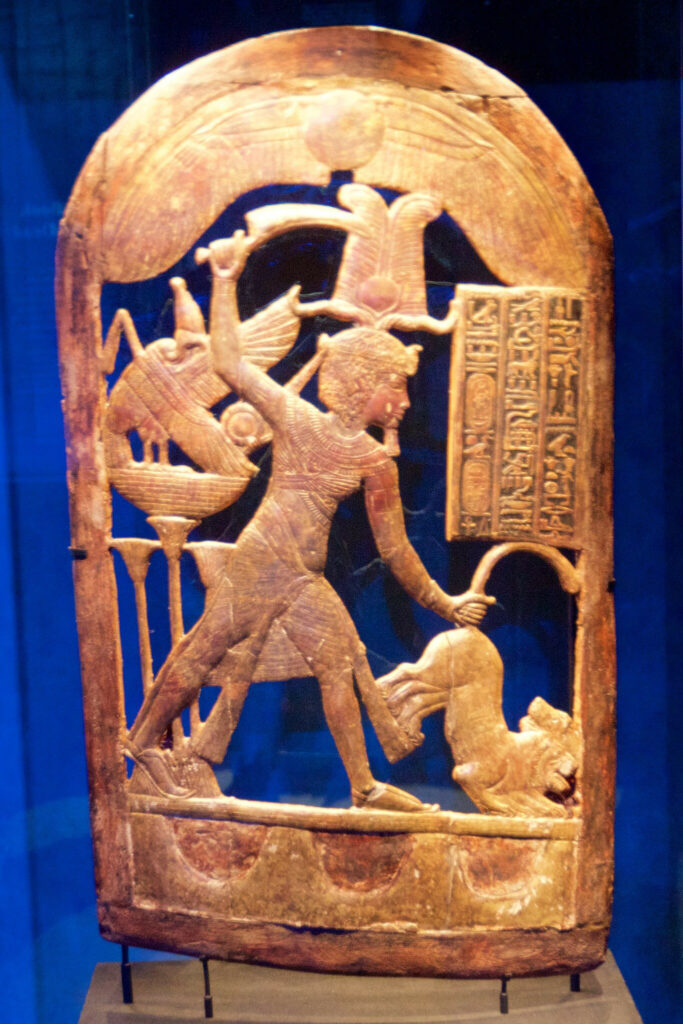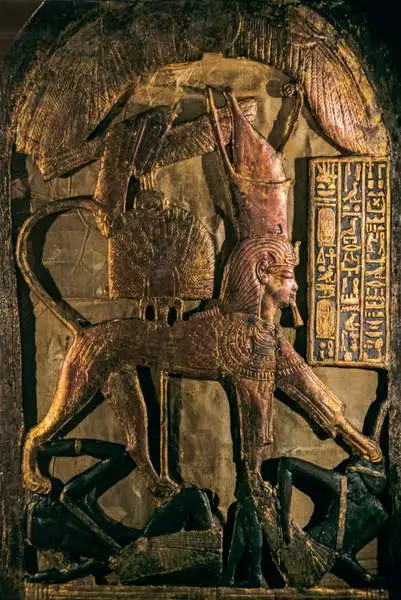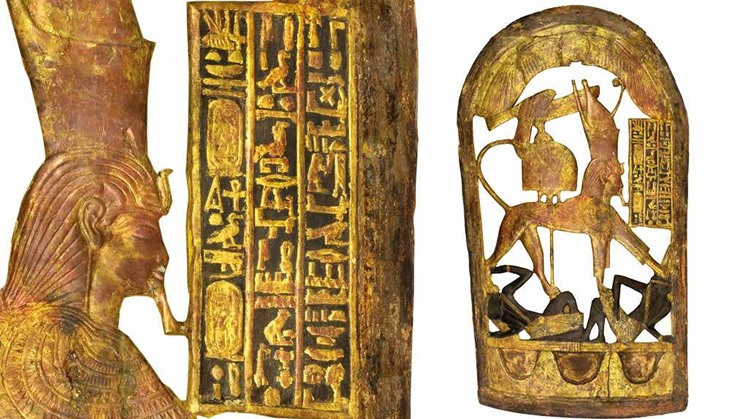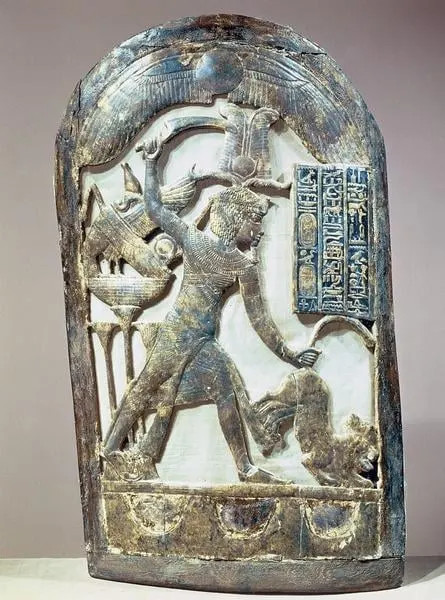Unearthing Treasures from the Boy King’s Tomb

In the depths of Tutankhamun’s tomb, archaeologists made a remarkable discovery: eight shields, four of which stood out as ceremonial masterpieces. These ornate artifacts, crafted from openwork wood, were intricately incised and gilded, showcasing the exceptional artistry of ancient Egyptian craftsmen.
A Shield that Tells a Tale
The Winged Protector and the Triumphant Pharaoh
One shield, in particular, captures the imagination. At its apex, a winged sun disk curves gracefully, symbolizing divine protection for the young king below. Tutankhamun himself is depicted in a pose of power and dominance. In one hand, he wields a fearsome scimitar, while the other grasps the tails of two lions – a potent representation of Egypt’s vanquished enemies.

Guardians of the Realm
Adding to the shield’s symbolic power, the vulture goddess Nekhbet spreads her protective wings behind the pharaoh. This divine figure further emphasizes Tutankhamun’s role as Egypt’s divinely appointed ruler. Below these central figures, a decorative band evokes the rugged mountains of the desert, grounding the scene in Egypt’s iconic landscape.
A Second Shield: The Sphinx Triumphant
Symbols of Unity and Conquest

Another ceremonial shield tells a different, yet equally compelling story. This wooden masterpiece, covered in gilded stucco and inlaid with rich ebony, presents Tutankhamun as a human-headed sphinx. Wearing the combined crowns of Upper and Lower Egypt, the king-sphinx tramples upon the southern foes of Egypt, likely representing Nubian adversaries.
Divine Approval and Eternity

Behind this powerful image of the king, a mysterious face appears, surmounted by a hawk clutching the shen sign – a symbol of eternity. The entire scene is crowned by the familiar winged solar disk, reinforcing themes of divine protection and royal authority.
A Legacy Preserved

These magnificent shields, dating to the late 18th Dynasty (circa 1332-1323 BC), offer a glimpse into the complex symbolism and unparalleled craftsmanship of ancient Egypt. Discovered in the famous tomb KV62 in the Valley of the Kings, they now reside in the Grand Egyptian Museum, continuing to captivate visitors with their beauty and historical significance.

